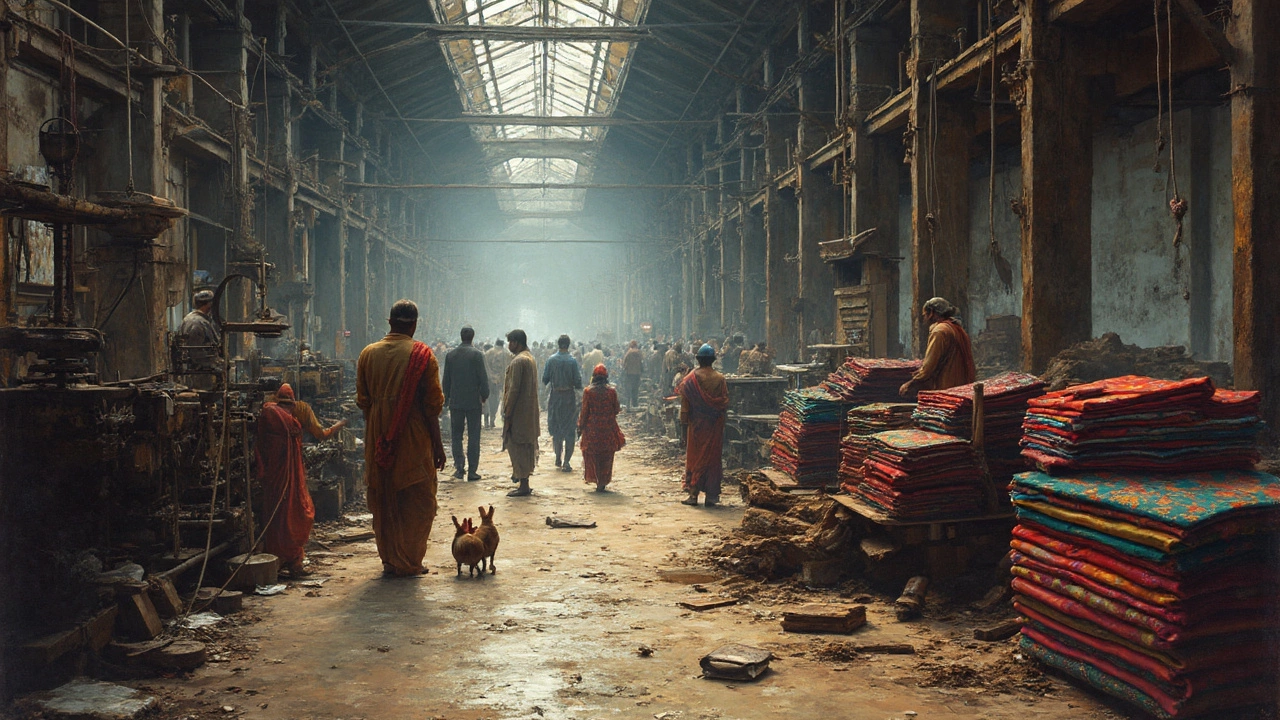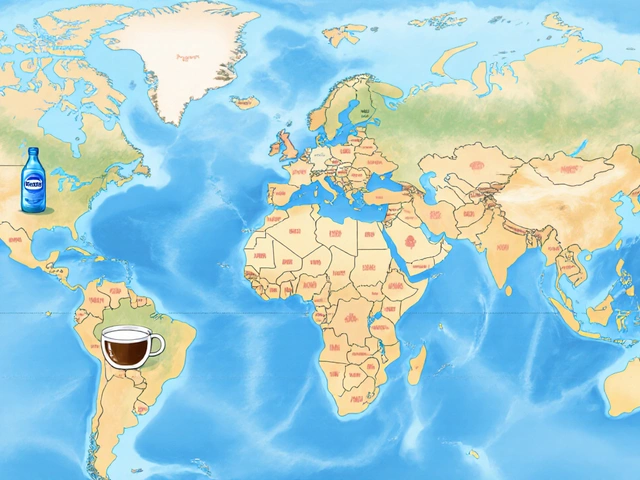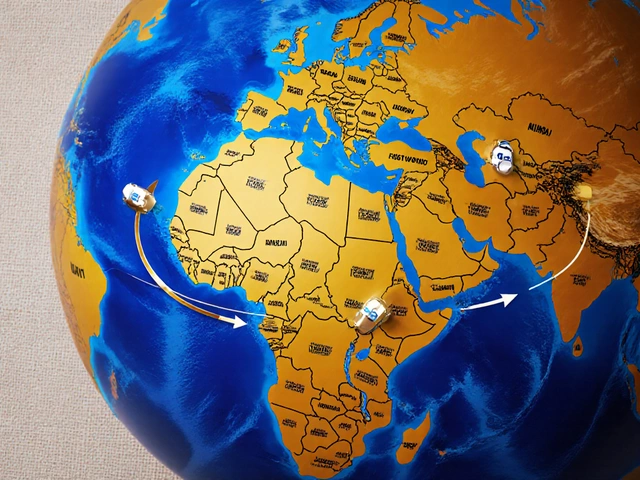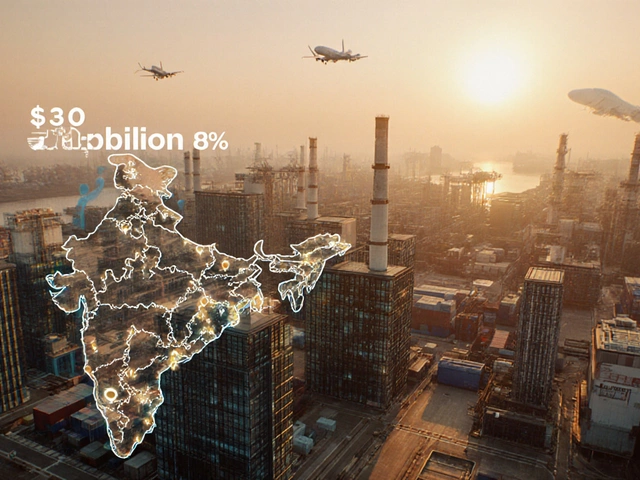The textile industry in India isn’t what it used to be. Factories that once buzzed with activity now struggle to fill orders, and workers who built their lives around cloth and fabric are on the lookout for new jobs. It’s not about a single bad year—there’s something much bigger at play here.
Globally, Indian textiles are facing some serious heat from countries like Bangladesh and Vietnam. They can pump out goods faster and cheaper, thanks to slick supply chains and friendlier business rules. Meanwhile, Indian manufacturers are stuck with old machines that stop working at the worst times, driving up costs and making it almost impossible to compete on price or quality. Even if the product is good, slow delivery and higher prices drive away international buyers.
It gets worse when you look at policies and taxes at home. GST rates on textiles keep changing, confusing business owners. Plus, getting subsidies or loans is like running a marathon with a blindfold. It’s not just about profit anymore; it’s about survival.
If you’re in the business or thinking of getting in, here’s a solid tip: keep an eye on market trends, invest in tech upgrades if you can, and don’t ignore changing customer tastes. The old ways just don’t cut it anymore. Staying ready for change could be the difference between thriving and shutting shop.
- Competition and Global Pressures
- Outdated Technology and Production Issues
- Government Policies and Taxes
- Changing Workforce and Consumer Trends
Competition and Global Pressures
The big headache for India's textile players isn't just local. It's the global crowd muscling in, especially from Bangladesh, Vietnam, and China. These countries have turned up the heat in ways that India's textile industry India wasn't fully ready for. Let’s break down how this competition stacks up.
First off, labor costs in Bangladesh and Vietnam are way lower. In 2024, the average garment worker in Bangladesh took home around $95 a month, while in India, that number was often double, sometimes more. Cheaper labor means they can sell clothes and fabrics for less—and international brands, from Zara to Walmart, go wherever prices are lowest.
Second, trade agreements matter. Vietnam, for example, has free trade deals with the EU and several other big markets. That means their exports get in with little or no tax, while Indian textiles face extra duties. This eats into profits and makes it easy for buyers to look elsewhere for their bulk orders.
There’s also the issue of infrastructure. Ports in countries like Vietnam are fast and efficient, so goods move out quickly. Indian ports, on the other hand, are often bogged down by paperwork and delays. A buyer who waits two extra weeks for Indian goods is probably not coming back next season. If you want the numbers, look at turnaround time: it takes about 5-7 days for shipments to clear out of Vietnamese ports, compared to 10-15 days in some of India’s busiest ports.
| Country | Avg. Garment Worker Salary (USD, 2024) | Typical Export Tax to EU | Avg. Port Turnaround (Days) |
|---|---|---|---|
| India | $190 | 9.6% | 10-15 |
| Bangladesh | $95 | 0% | 7-10 |
| Vietnam | $120 | 0% | 5-7 |
| China | $220 | 12% | 6-8 |
If you run a shop or factory, this all boils down to the bottom line—customers want cheap, quick, and reliable. Falling behind global rivals often means losing out on repeat business. Smaller local brands, in particular, get squeezed as international brands shift their focus to partners who can deliver more for less.
The message is clear: the world isn’t waiting for India to catch up. To stay in the game, local manufacturers will need to rethink their strategies—and that might mean getting lean, upgrading systems, or even teaming up with overseas partners to survive.
Outdated Technology and Production Issues
Walk into most small and even mid-sized textile factories in India, and you’ll probably see machines that have been running non-stop for decades. The old power looms and spinning machines often break down, slow production, and eat up electricity. That’s no minor hiccup; when a loom stalls, every minute counts and orders pile up. Modern buyers want bulk quantities, fast turnaround, and perfect quality—something these aging machines can’t deliver.
If you compare India to a country like Vietnam, the difference is clear. Vietnamese factories are 35% more energy efficient because they use newer machinery. Older Indian mills, meanwhile, rack up bigger electricity bills and generate more waste. In fact, according to a 2024 industry survey, more than 60% of small mills still rely on machinery bought before 2005. The outcome? Indian textiles have higher production costs and more defects per batch.
| Country | Average Machine Age | Energy Cost per Unit ($) |
|---|---|---|
| India | 18 years | 0.20 |
| Vietnam | 8 years | 0.15 |
| Bangladesh | 10 years | 0.13 |
This over-reliance on old equipment has another ugly side: safety issues. Workers have to deal with sudden belt snaps, faulty wiring, and zero automation safeguards. Plus, the lack of digital tracking makes it harder to spot supply or defect problems before it’s too late. Digital tech can boost productivity by up to 25%, but less than 30% of firms in the textile industry India have switched to smart manufacturing or even basic software upgrades.
- If you’re a textile business owner, look at practical ways to swap out the oldest machines each year instead of waiting for a total plant overhaul.
- Government schemes like TUFS (Technology Upgradation Fund Scheme) can help offset some upgrade costs if you’re ready to tackle the application process.
- Explore pre-owned newer machinery if brand new is out of budget; even a small jump in machine age can make a big difference.
Don’t forget—if you’re not updating, you’re falling behind. The world market won’t wait for Indian manufacturers to catch up.

Government Policies and Taxes
The rules and taxes around the textile industry in India can feel like a minefield. Manufacturers are constantly hit with changing policies—each government budget seems to bring a new twist. When the Goods and Services Tax (GST) first showed up back in 2017, it was supposed to make things simpler. But for textiles, it turned out more like a headache. The GST rates for different fabric types and clothing items keep shifting, which leaves business owners scrambling to keep up.
Have a look at some real numbers that show just how much these taxes bounce around. Check out the recent GST slab changes for textile products:
| Product Category | GST Rate in 2017 | Revised Rate in 2022 |
|---|---|---|
| Cotton Fabrics | 5% | 5% |
| Man-made Fabrics | 18% | 12% |
| Apparel (up to ₹1000) | 5% | 12% |
| Apparel (above ₹1000) | 12% | 12% |
It might not look like much, but for small and medium factories, even a jump from 5% to 12% on lower-priced clothes can seriously cut into profits. That’s why a ton of businesses call these tax moves unpredictable and damaging. Plus, a lot of smaller operators either don’t have the resources to figure out the paperwork, or they get caught in delays while waiting for refunds from the government.
On top of the GST chaos, the export scene is loaded with paperwork and red tape. Getting access to textile export incentives sounds good on paper, but it’s slow and sometimes not very clear who actually gets paid. A recent government report admitted that over ₹14,000 crore in export benefits got held up in 2023 alone because of delays in processing and changing rules. That’s a stack of cash that businesses could be using to pay wages or update their machines.
- If you’re running a textile unit, try to stay on top of GST council updates—they can happen faster than you think.
- Many industry groups regularly organize Q&A sessions and webinars. Joining these can help you figure out the latest tax issues.
- If you’re exporting, make sure all your documentation is tight from the start. Missing even a small detail can cost you weeks, if not months.
For people working in the Indian textile industry, policies and taxes aren’t just boring rules—they can decide who gets to stick around and who’s forced to shut down.
Changing Workforce and Consumer Trends
Workers in the Indian textile industry are getting harder to find. Young people don’t want these jobs anymore; they’re looking for safer office work or tech gigs. Even in major textile hubs like Tiruppur and Surat, factories report unfilled vacancies, especially for skilled machine operators. About 40% of workers in the industry are women, but many are leaving for better options with less physical strain and more stable pay. So, experience is walking out while fresh hands just aren’t turning up.
The average age of a textile worker is going up. Older workers often stick to what they know and aren’t keen on learning new tech or complicated machines. This makes modernization tough for factories that want to upgrade but don’t have a crew ready to handle digital systems or robotics.
At the same time, buyer habits have flipped fast. Indian consumers used to go for local fabrics and trusted brands. Now, online shopping and fast fashion are the new kings. Shoppers expect more choices, quick style changes, and eco-friendly products. Foreign brands are everywhere and social media decides what’s hot. It’s no longer enough to produce basic cotton shirts or saris; today’s crowd wants organic fabrics, bold prints, and even clothes made from recycled plastic.
Here’s how this shift has impacted the textile industry India:
- Factories need workers who can handle new machines and software, not just spinning and weaving.
- Attracting talent requires better pay, safer workplaces, and some real career growth, or else potential employees will pick other fields.
- Brands and manufacturers must track global fashion trends and respond quickly, not just twice a year like before.
Check out what’s really happening on the ground:
| Factor | 2015 | 2024 |
|---|---|---|
| Average Worker Age | 32 years | 39 years |
| Industry Labor Shortage | 5% | 18% |
| Online Textile Sales (Share of Retail) | 3% | 23% |
| Share of Eco-Friendly Textiles | 1% | 10% |
If you’re running a factory or a brand, the old rulebook just doesn’t work anymore. Upskilling your team, listening to what buyers actually want, and being open to new business models—like selling direct online or making eco-friendly clothes—can make all the difference. It’s a tough time, but adapting now beats being left behind.











Write a comment